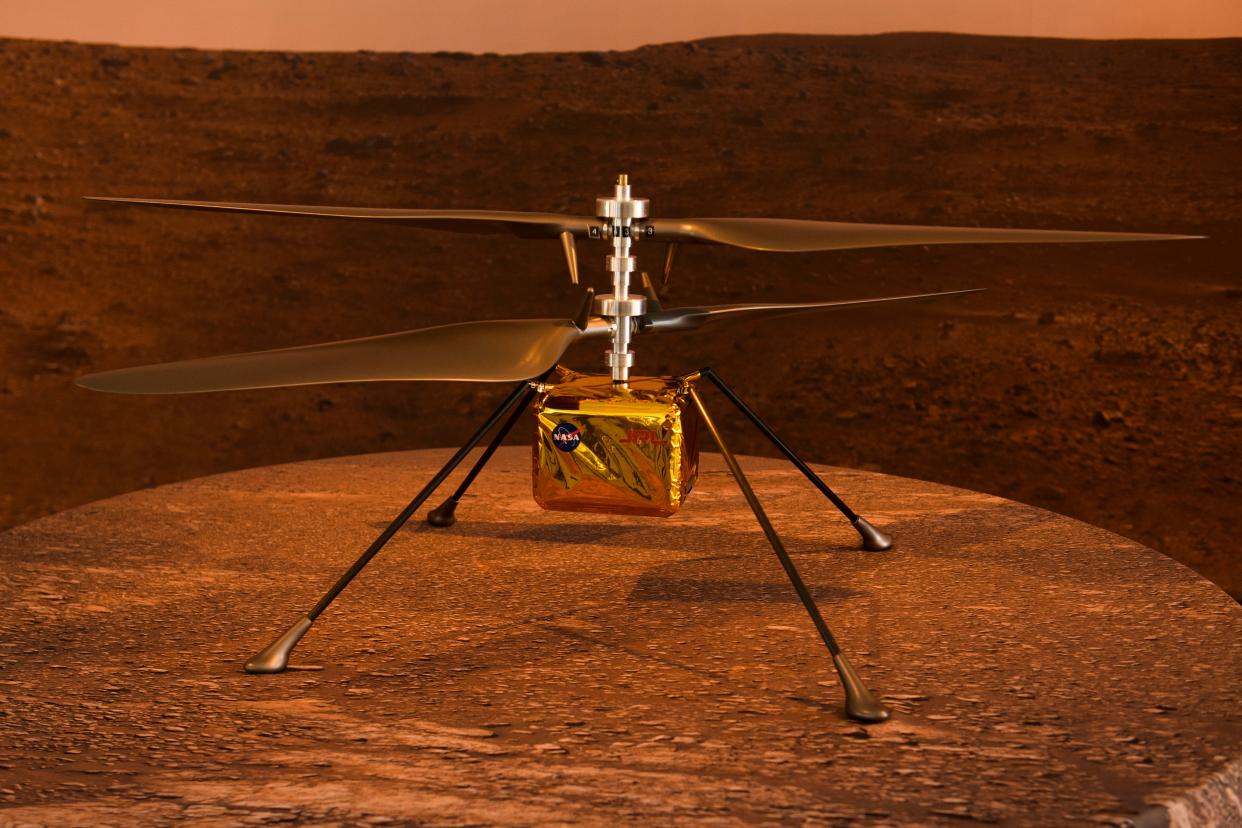Nasa Ingenuity helicopter fails to take off with clock ticking to complete research goals

Nasa’s pioneering Mars helicopter, which has so far completed three successful flights on the Red Planet, failed to take off for what was to be its most ambitious mission yet on Thursday.
The US space agency hopes the setback will only be temporary, but faces a ticking clock to achieve all it can with the drone that is doomed to crash-land onto the planet’s surface in just a week.
The team analysing the data from Thursday’s attempt said it would try again soon, adding that the chopper is “safe and healthy”.
According to the space agency, Ingenuity failed to transition to “flight mode” – the same software glitch that also delayed the chopper’s maiden voyage on Mars.
During this early delay, Nasa engineers were hit with a roadblock as the 1.8kg helicopter would not transition from “pre-flight” to “flight” mode.
#MarsHelicopter is safe and healthy. Data indicate the rotorcraft didn’t transition to flight mode, which had been a possible outcome. We'll attempt the 4th flight again on April 30. First data expected the same day around 10:39a PT (1:39p ET/5:39p GMT). https://t.co/X3fdIbbHyM pic.twitter.com/UQCOD0csQk
— NASA JPL (@NASAJPL) April 29, 2021
With a software update, the space agency successfully overcame the glitch in a section of Ingenuity’s control systems called the “watchdog timer” that alerts the system to potential issues and ensures the operation does not continue in the event of detected problems.
Following the coding tweaks, Nasa estimated that there was still a 15 per cent chance the autonomous rotorcraft may not work on each flight attempt.
“Today’s delay is in line with that expectation and does not prevent future flight,” the US space agency noted in a statement.
In the planned flight attempt, Nasa had hoped to push the helicopter’s performance on the Red Planet, increasing the time it spent airborne to 117 seconds from the 80s it spent flying in its previous attempt.
Nasa had also planned to increase the max airspeed of Ingenuity to 3.5 m/s from its previous successful attempt of 2 m/s, and also more than double the total range it covered compared to its last flight.
Flight No. 4 is targeted for April 29. 🗓️#MarsHelicopter has met or surpassed all its tech demo goals. Now, we'll push performance. We'll up the time airborne to 117 seconds, increase max airspeed to 3.5 m/sec (8 mph), & more than double the total range. https://t.co/4s7ujMZZmz pic.twitter.com/DxgB7e04Ni
— NASA JPL (@NASAJPL) April 29, 2021
Each flight on Mars is already challenging, given the very thin atmosphere of the Red Planet, and the speeds needed on Ingenuity’s 4m rotor blades to lift it for successful flight.
While helicopters on Earth spin close to 400-600 rotations per minute (rpm), Ingenuity’s blades need at least 2500 rpm to achieve lift.
Despite these hurdles, the chopper has so far proved that it is up to the task, successfully completing its longest and fastest flight on the Red Planet in its last attempt, covering 50m – beyond what it had accomplished during its testing phases on Earth.
“From millions of miles away, Ingenuity checked all the technical boxes we had at NASA about the possibility of powered, controlled flight at the Red Planet,” Lori Glaze, director of NASA’s Planetary Science Division had earlier said in anticipation of the subsequent flight tests.
“Future Mars exploration missions can now confidently consider the added capability an aerial exploration may bring to a science mission,” Glaze added.
Nasa engineers have just one week left to complete two more flights expected to push Ingenuity to its limits.
The plan is that for its fifth and final flight, the helicopter will fly as far and as fast as it can before crashing into the surface of the planet and sending data about the journey back to Earth.
Read More
Watch live as Nasa astronauts speak from ISS before return to Earth
Seti is building a ‘Library of the Great Silence’ for alien civilisations to use
China launches main module to begin first permanent space station of its own

